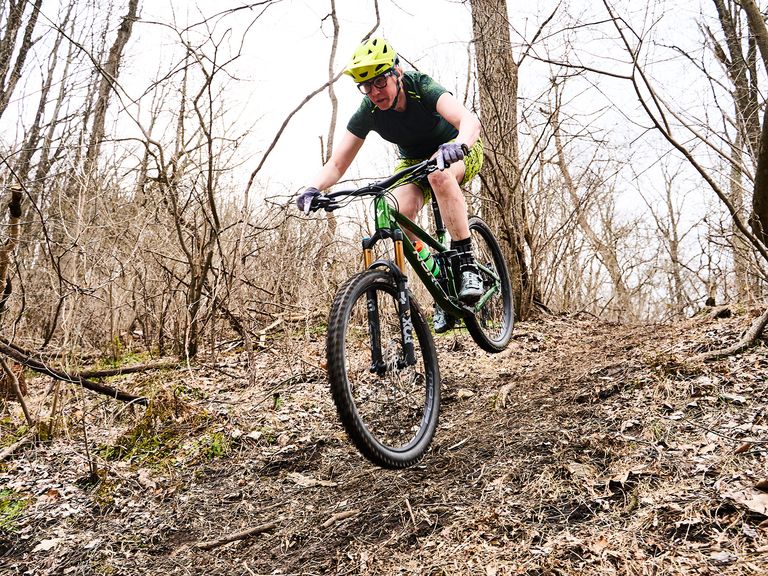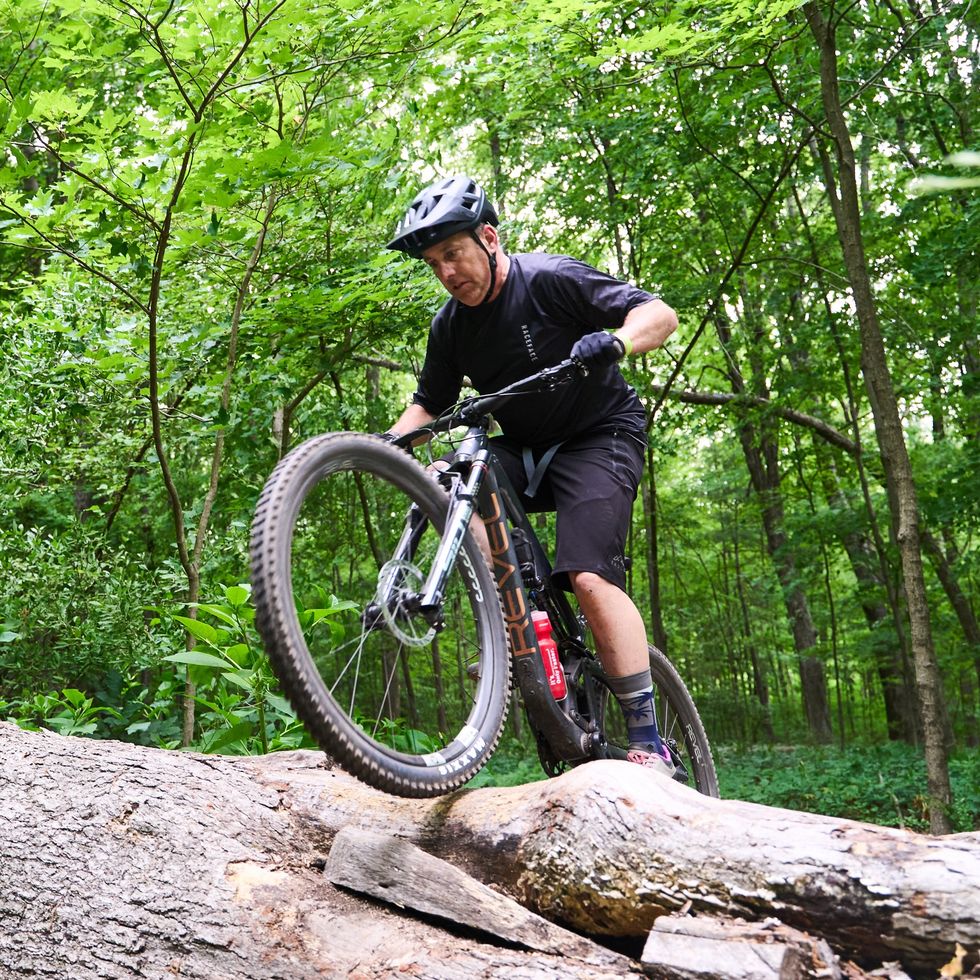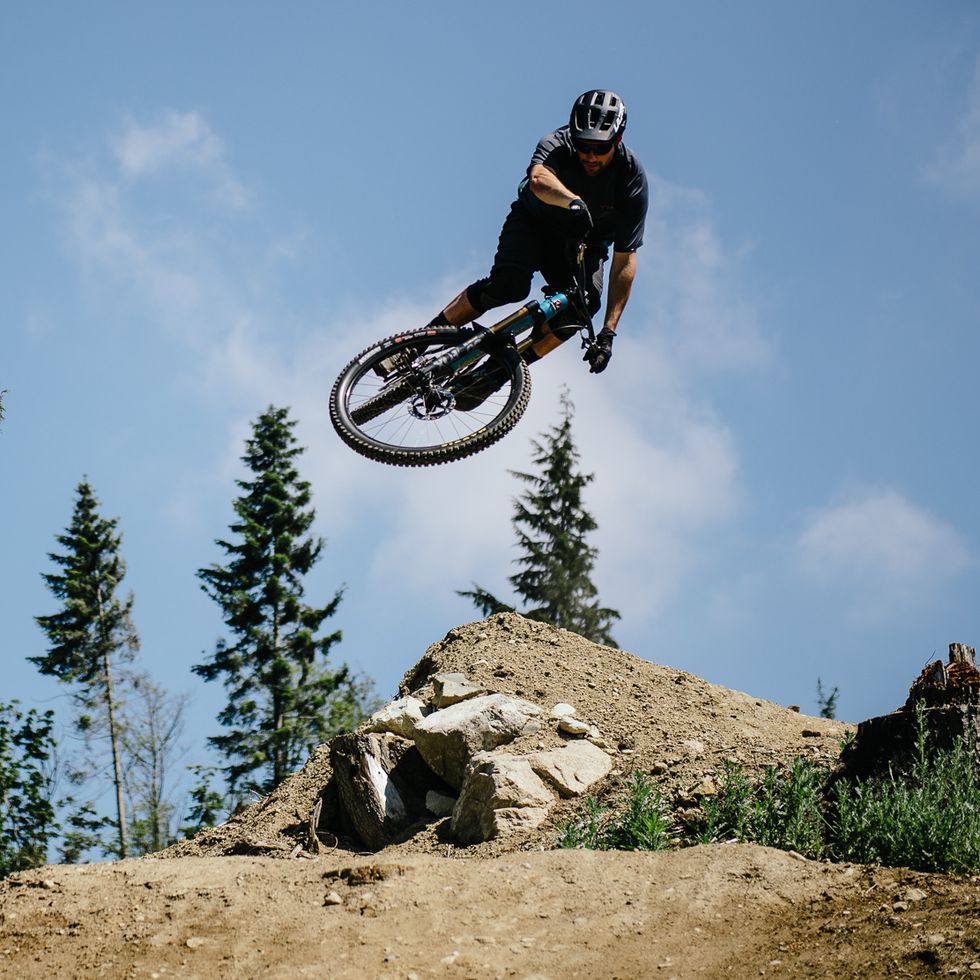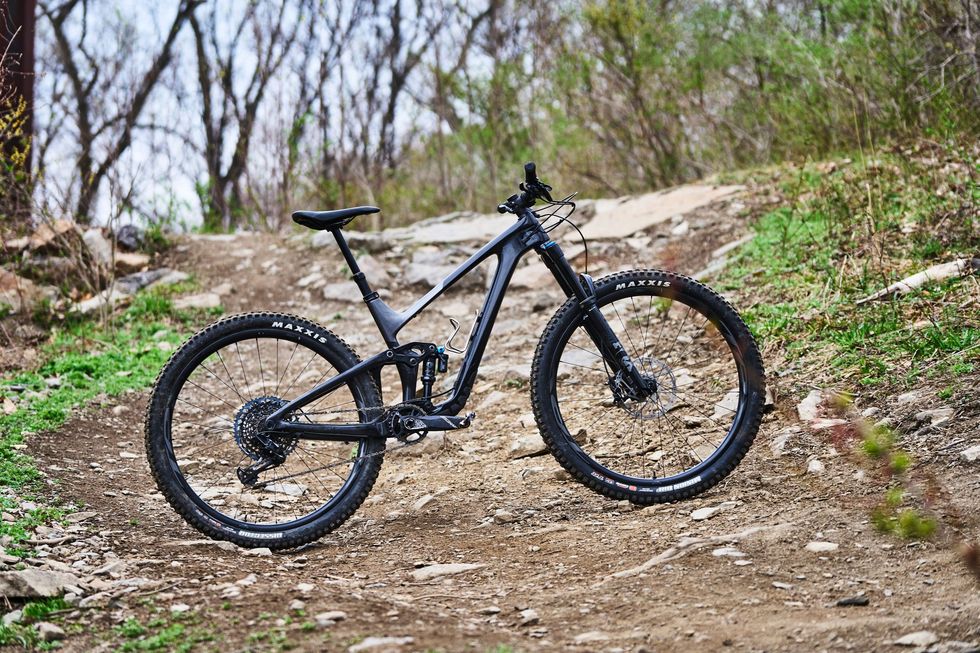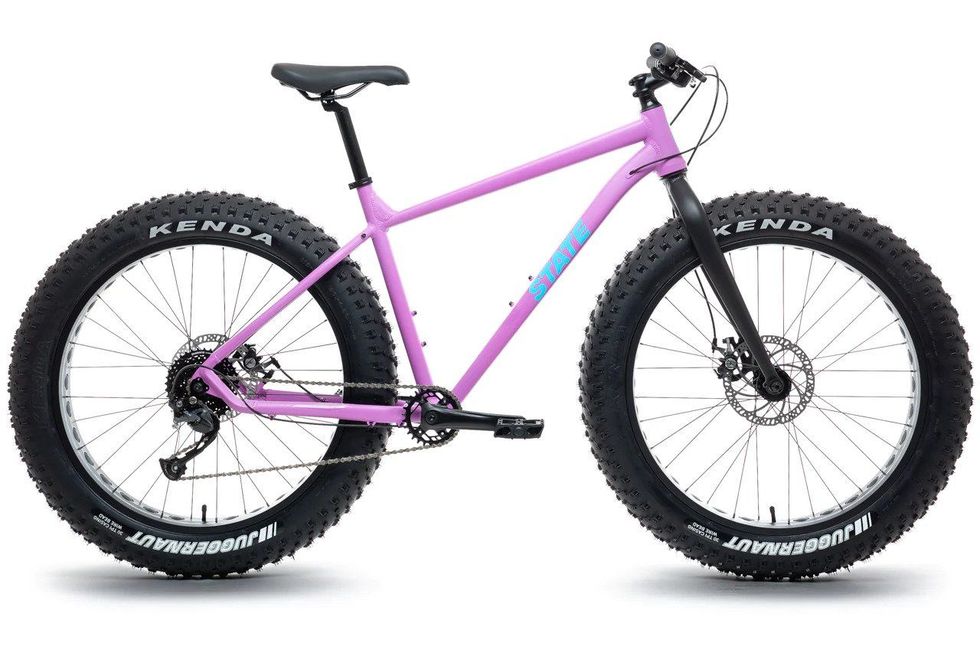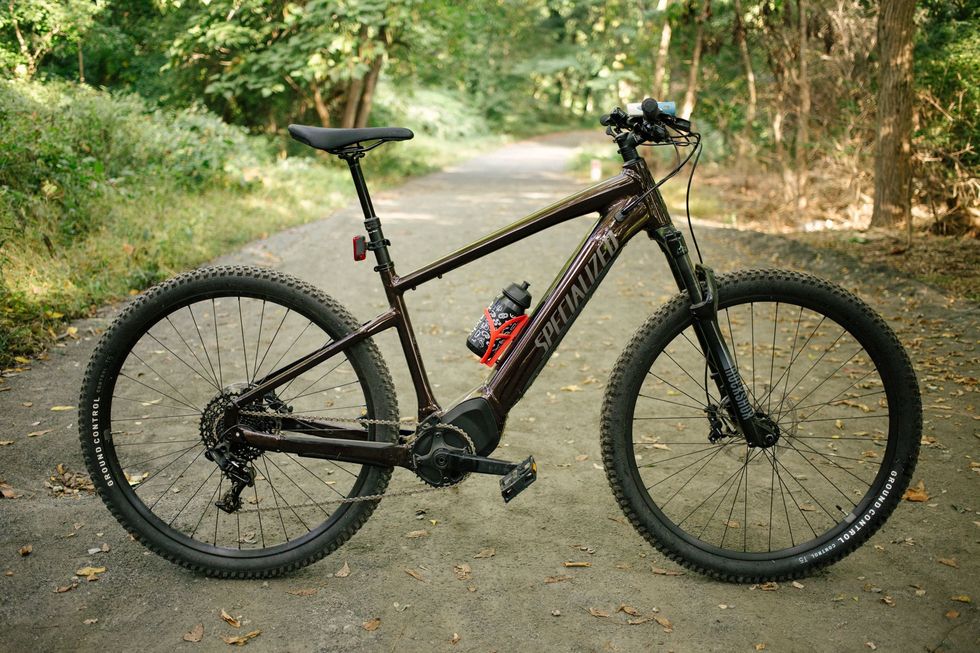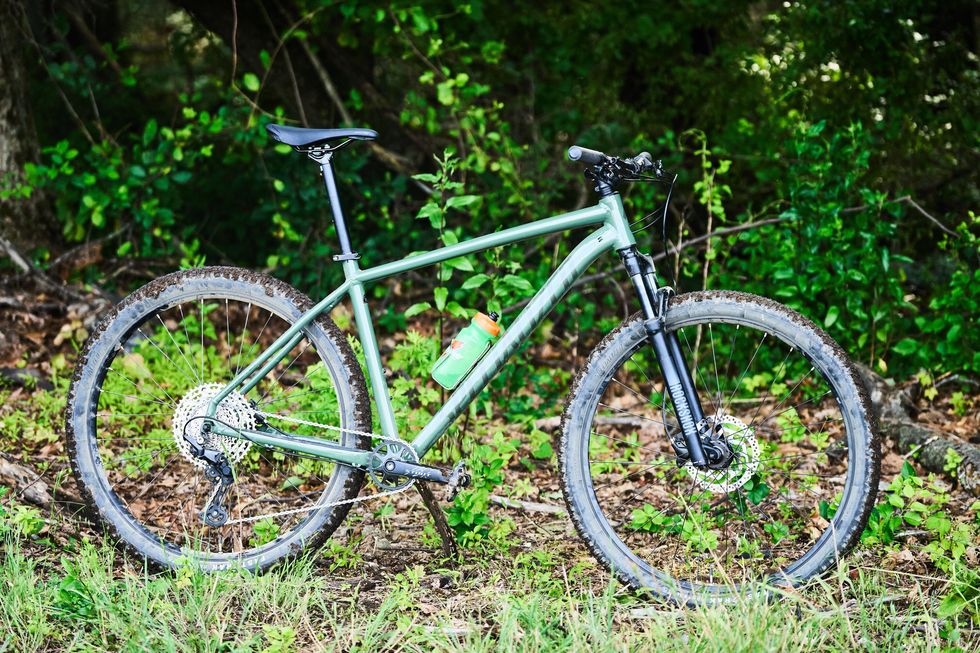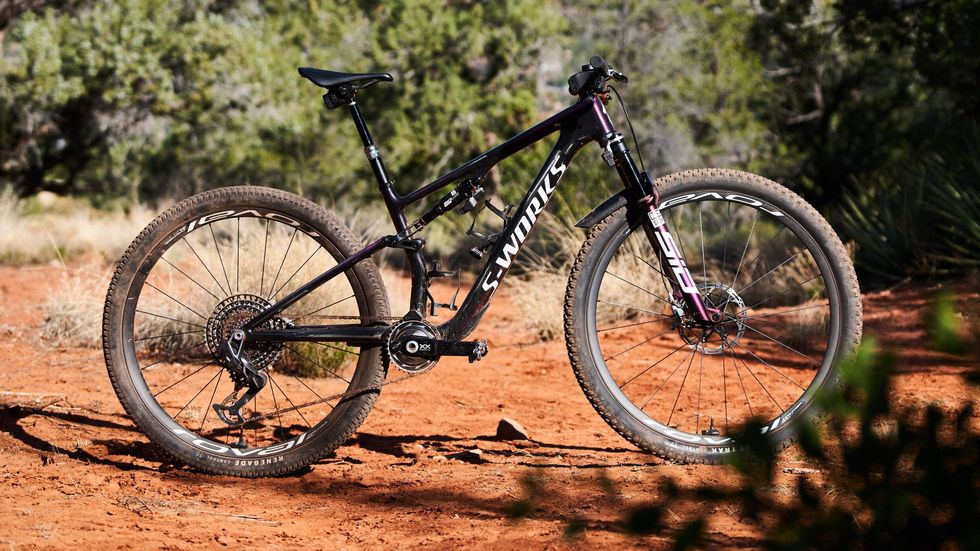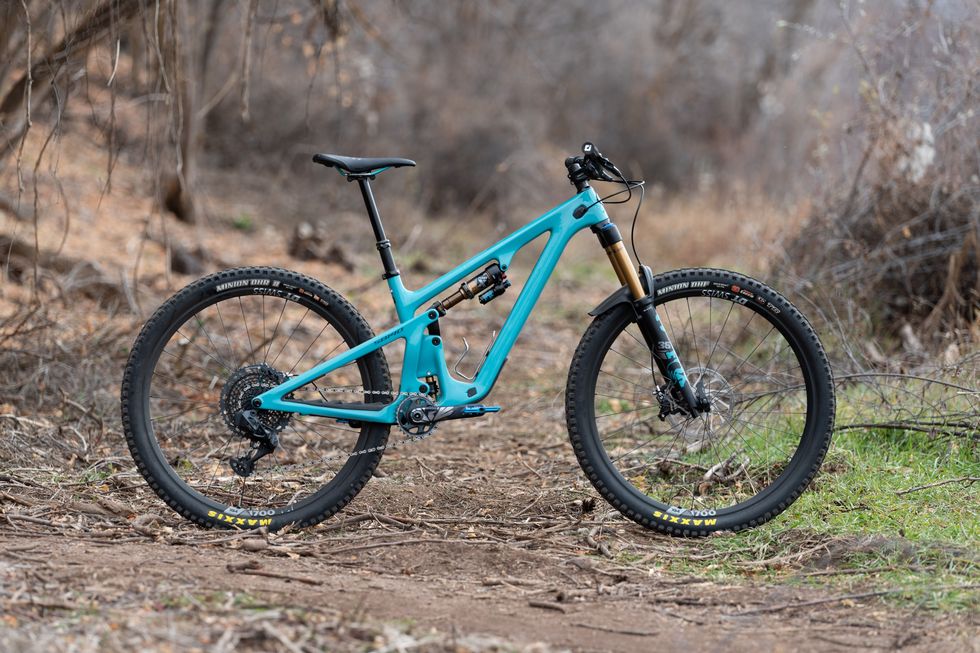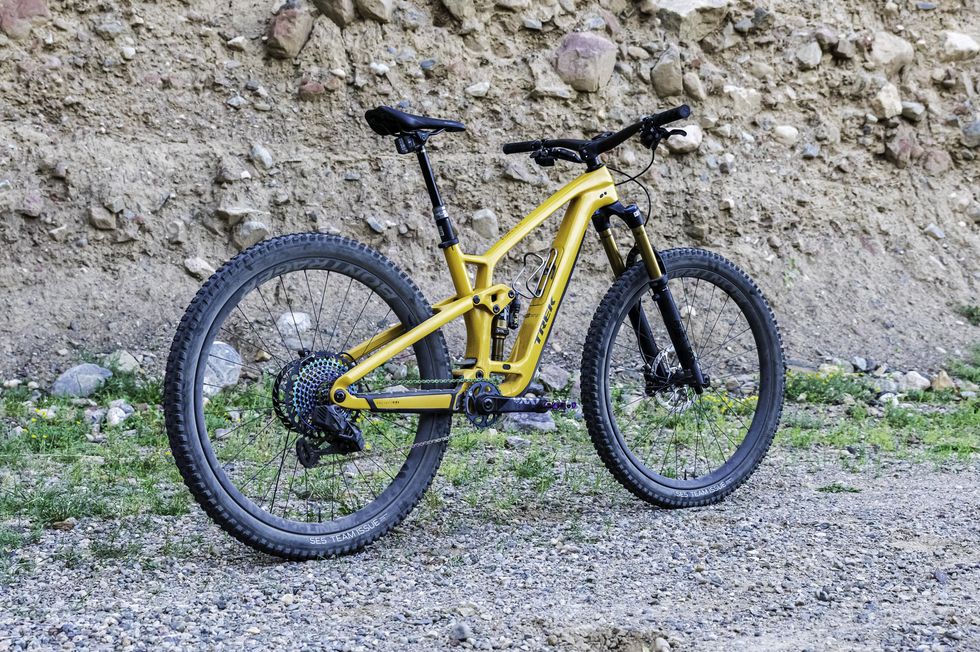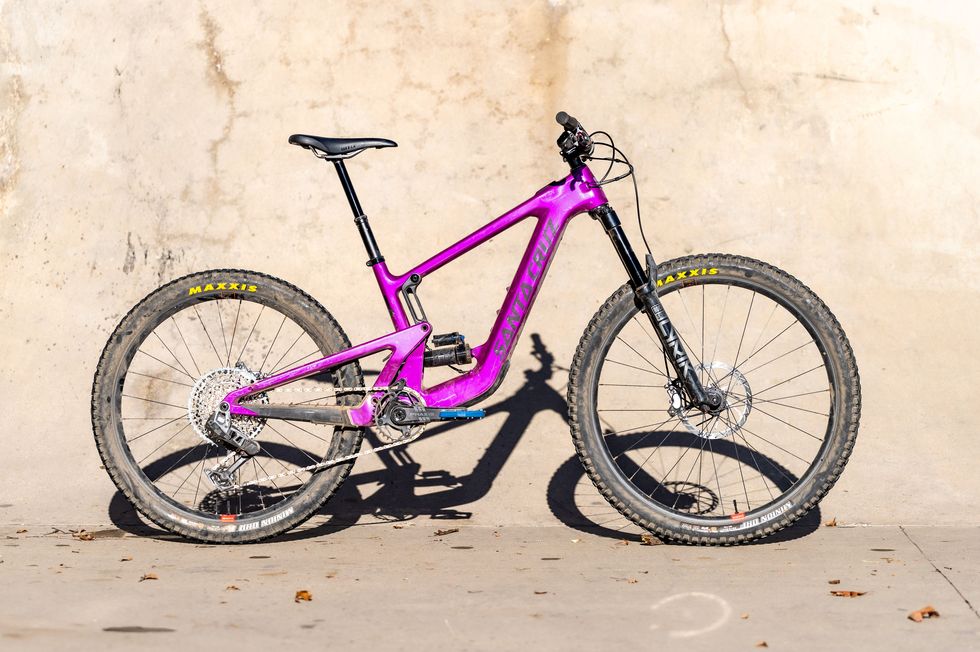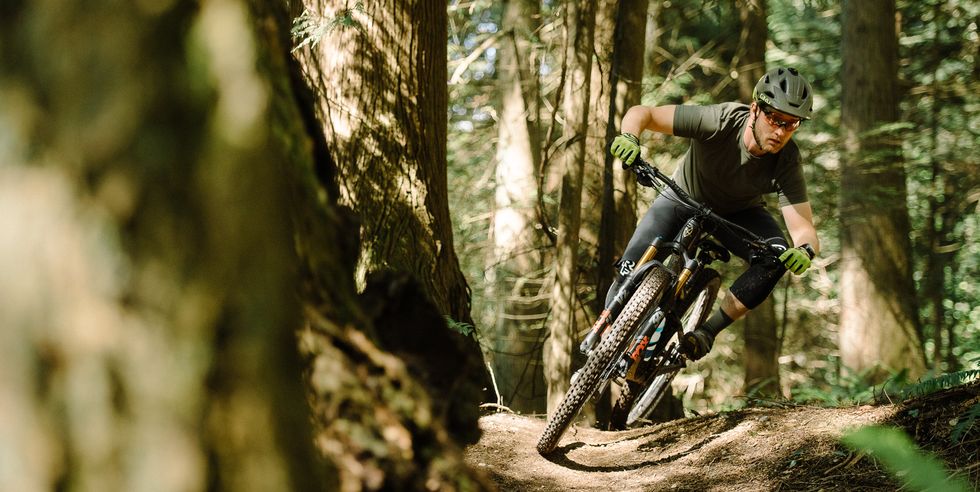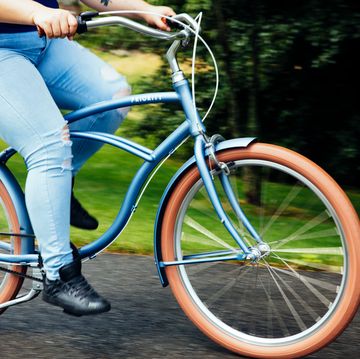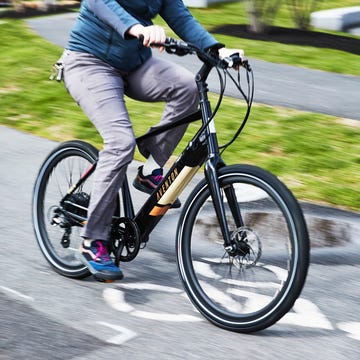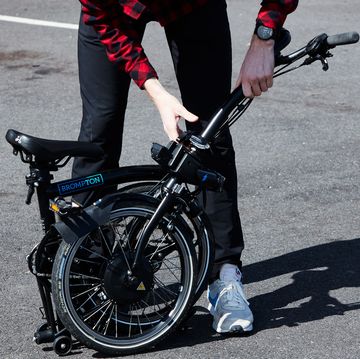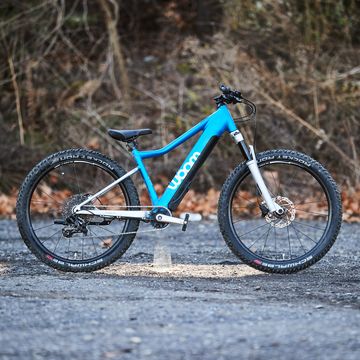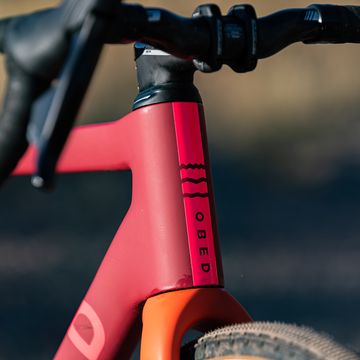Many of our favorite mountain bike memories can be distilled into fleeting moments of flow— weaving through tree-lined trails or plunging down a rocky singletrack and then recounting these experiences with friends back at the trailhead. A good mountain bike is a tool that allows you to make the most of these moments.
When it comes to the various types of bikes, the mountain bike category is broad. There are hardtails, full suspensions, cross-country, trail, enduro, and downhill models, and they all have benefits and drawbacks to consider before making a purchase. The diversity of the breed is great for experienced mountain bikers who know exactly what they’re looking for, but it can be confusing for new riders trying to find a mountain bike that fits their needs.
With so many sub-genres, there’s no such thing as the “best mountain bike.” The best mountain bike is the one that gets you excited to get out the door and onto the trail. With that in mind, we’ve rounded up 10 of the best mountain bikes you can buy right now. There’s truly something for everyone in this guide. We’ve included budget-friendly options for first-time buyers, full-suspension trail bikes that can tackle the most rugged trails, e-mountain bikes, and fat bikes.
Best Mountain Bikes
- Dream Bike: Giant Trance X Advanced Pro 29 SE
- Best Fat Bike: State 6061 Trail+ Fat Bike
- Best Priced E-MTB: Specialized Turbo Tero 3.0
- Best Budget Hardtail: Specialized Rockhopper Elite 29
- Best $1,000 MTB: Giant Talon 29 1
What to Consider When Buying a Mountain Bike
How to buy a mountain bike
Today, buyers have the option to walk into their local bike shop, purchase from various online retailers, or, in some cases, buy directly from the brand. Each approach has its own pros and cons.
Buying from online retailers or directly from a brand comes with the benefit of having the bike delivered directly to you, which is great if you know exactly what you want and can assemble it yourself. (You can also have your local bike shop assemble it for a fee.) The ease of clicking “buy” from your phone or keyboard is offset by the fact that fitting, test rides and returns might be more involved than working with a local brick-and-mortar retailer.
Good bike shops can offer a wealth of information for first-time buyers, but sometimes, they can also be intimidating. Use your judgment: if you feel welcomed and heard at your local bike shop, consider giving them your business, but don’t feel obligated. You have other options.
Mountain Bikes and “mountain bikes”
Many first-time buyers are confused by the fact that not all “mountain bikes” are actually designed to be ridden off-pavement. In fact, most of the knobby-tired bikes you see at big box stores aren’t designed for trail riding at all. These bicycles feature frame geometry (the angles of the frame that determine how a bicycle rides) that is better suited to riding on bike paths and commuting than riding on twisty singletrack.
Given that most of these bikes are priced below $500, it should come as no surprise that they are equipped with budget components that aren’t up to the rigors of mountain biking.
What’s New in Mountain Bike Design
During the past decade or so, mountain bikes have undergone one of the largest evolutions in their history. This includes the almost wholesale shift to 29-inch wheels and 1x drivetrains, widespread use of dropper posts and thru-axles, and major changes in geometry, including steeper seat angles, slacker head angles, longer reaches, and the use of shorter stems and wider handlebars.
Some of that madness has tapered off. Until recently, every model update would include “longer, lower, slacker” geometry. But that progress has lulled and now we’re seeing model updates with minimal geometry changes: Yeti’s SB140 is one example.
Today, 29-inch wheels are still the standard—a few brands like Yeti and Pivot still make 27.5 models—but there is a growing trend, particularly among trail, enduro and downhill bikes as well as some e-bikes towards mixed (sometimes called mullet) wheel sizes. These bikes run a 29-inch wheel in front and a smaller 27.5-wheel in the rear. The main advantages claimed are more clearance when hanging off the rear of the bike in steep terrain, and a snappier cornering feel.
When it comes to components and features, the big change here is the almost industry-wide adoption of the UDH (universal derailleur hanger). As the name implies, this is a single replaceable derailleur hanger standard. Plus, a bike that employs the UDH standard also accepts SRAM’s new Transmission drivetrain with a direct-mount rear derailleur.
Key Geometry Considerations
If you’ve been following the trends in mountain bikes, you may have noticed that “longer” is the most popular word. Reach (a measurement of the rider’s distance to the handlebar) is getting longer, which—along with increasingly slack head tube angles—also lengthens the bike’s front center and wheelbase. This additional length centers the rider between the wheels more and makes bikes feel more stable, more secure in steep terrain, and smoother overall.
Longer isn’t always better, though, and can make a bike feel less stable at slower speeds and harder to maneuver in tight terrain.
Seat tubes are also much steeper than they’ve been—as steep as 76 degrees or more. This puts most riders in a more favorable seated climbing position. But steeper seat angles also allow frame engineers to move the seat tube out of the way as they try to increase travel, decrease chainstay length, and fit bigger wheels and tires into their frames.
Types of Mountain Bikes
Why You Should Trust Us
Bicycling has been vetting and reviewing bikes, gear, and accessories for more than 50 years. Bike recommendations are based on the extensive work of the test team, which includes Deputy Editor Tara Seplavy, Senior Test Editor Matt Phillips, Test Editor Dan Chabonov, and Maintenance Editor Gabe Ortiz. Together, they have more than 60 years of ride-testing experience and insight that they bring to every recommendation they make.
For this roundup, Matt Phillips selected, tested, and endorses these bikes based on his substantial riding experience and vast industry knowledge. His efforts were complemented by additional reporting and research by Josh Patterson, an industry veteran as well.
Josh Patterson has been riding, racing, and reviewing mountain bikes for more than a decade. His background includes time spent spinning wrenches as a professional cycling mechanic, a master’s degree in journalism, and bylines with more than a dozen cycling media outlets. Patterson’s favorite trails are rocky and technical, and his favorite mountain bikes leave him grinning.
How We Tested Mountain Bikes
Over the past 12 months, our team of experienced testers rode more than 100 different mountain bikes. Our testing grounds ranged from tight and twisty East Coast trails to high-speed alpine descents in the Rocky Mountains. We raced them, rode them on our local trails, and hit the bike park. We tested each model for its intended purpose as well as pushing the bikes’ limits outside of their primary intent to see how versatile they could be.
Often, we swapped tires and other components to get a better understanding of each bike. After lots of sweaty, dirty miles, we considered the full picture, weighing not just performance and handling but also, price, comfort, value, and reliability.
Join Bicycling All Access for in-depth bike reviews
Our Full Mountain Bike Reviews
Giant is one of the best brands to consider when it comes to bang for your buck. Dollar for dollar, the Trance X Advanced Pro 29 SE beats its closest competitors in terms of component spec at full retail. Having an opportunity to buy it on sale just sweetens the deal even further.
The Trance is the quintessential trail bike that shines on climbs and descents. Upfront, there’s RockShox’ Lyrik Ultimate with 150mm of travel. The 135mm of rear suspension travel is managed by a matching RockShox Super DLX Ultimate shock. Giant’s Maestro suspension system is one of the more efficient suspension designs on the market, yet this trail bike is made even more capable by the addition of RockShox’ Flight Attendant suspension system. In a nutshell, this smart suspension system senses trail and rider inputs to adjust the compression damping to match the terrain. There’s no need to fuss with lockout levers—just enjoy the ride.
Fat bikes are great for hitting the trail once the snow starts flying. Several brands exited the fat bike market in recent years, but State Bicycle jumped in with its new well-priced, nicely-equipped 6061 Trail+ fat bike.
The 6061 Trail+ features an aluminum (hence the 6061 model name) frame and fork and rolls on 4.5-inch wide 26-inch tires. Other component highlights are a Shimano Altus 9-speed drivetrain and mechanical disc brakes. In typical State fashion, the bike packs a ton of value into a low price.
If the bright pink “wildberry” isn’t your style, State also offers the 6061 Trail+ in stone grey.
Specialized’s Turbo-series mountain bikes are some of our best-tested best E-MTBs due to their exceptional mid-drive mounted motor. The brand’s base-level Tero 3.0 electric mountain bike is a great entry point into trail riding.
This hardtail model has 29 x 2.35-inch tires, a 110mm travel suspension fork with lockout, and Shimano hydraulic disc brakes. While the fork and components aren’t high-end, they are dirt-worthy. Plus, the parts use standard sizes for easy upgrades and replacements.
Though overshadowed by its legendary Stumpjumper line-mate, the Rockhopper has been a mainstay of Specialized’s product line longer than most mountain bikers have been in production. Specialized offers a bevy of Rockhopper models between $650 and $1,400—We consider the Comp ($950), Elite ($1,150), and Expert ($1,400) models most suited for trail riding use.
We recently tested the Elite and found it a well-rounded bike that climbs quickly, is stable on descents, and capably handles a variety of trail conditions. It’s a good-looking bike too, and the parts—particularly the fork and forceful hydraulic brakes—are up to par for mountain bike duty. The price might be budget but its performance on the trail is refined.
The biggest surprise of our six-hardtail shootout, Giant’s Talon offers plenty of character from a bike that you might overlook because of its subdued profile. Much of its standout performance comes from the house brand suspension fork, which boasts a list of features not commonly found on bikes priced under $1,000.
These include an aluminum steerer tube and stanchions weight savings, an easily adjustable air spring that lets riders fine-tune the fork for their weight and riding style, and adjustable rebound damping for refined performance on the trail.
A few years ago, a 120mm full suspension bike with a 66-degree head tube angle would have been considered an aggressive short-travel trail bike. Today, that’s par for the course for the latest cross-country race bikes. Best of all, the latest Epic isn’t just for racers—it’s also an excellent bike for riders who want a lighter and speedier everyday mountain bike.
The new Epic 8 has more travel and capability thanks to improved geometry. It’s a fast bike that is efficient and is not afraid of rowdy terrain. One of the features we love most is SWAT storage in the downtube, which allows us to store trailside repair tools and event a packable shell inside the frame.
Born from the excellent SB130, Yeti’s new SB140 is a superb example of a modern trail bike. It does everything well: It’s efficient and capable on climbs both long and technical, it can truck tricky technical descents like a bigger bike, and it’s lively and responsive enough that it is an engaging partner in flatter terrain too.
This is also a bike for the long haul. Not only does it have a solid lifetime frame warranty (and a decent crash replacement offer) but it also has a lifetime warranty on the Switch Infinity suspension link. SB140 also has a standard threaded bottom bracket, sensible hose and housing routing (NOT through the headset) with full-length tunnels that make repair and replacement a breeze, and a short seat tube so many riders can fit a longer travel dropper if they wish.
For 2022, the sixth-generation EX underwent a training montage worthy of an ’80s movie and emerged bigger and badder. Suspension travel increased to 150mm in the front and 14omm in the rear, and it’s longer, slacker, stiffer, and comes with bigger tires. It also has a trap door and hidden storage in the down tube.
The longer and slacker geometry provides a more centered feel when you’re working the trail with the saddle dropped. The bike’s steering is light, and the bike climbs technical singletrack very well—a nice suspension platform and crisp pedaling manners help. It’s sure-footed on downhills and even rides a little bigger than its travel and geometry might suggest. There are a lot of great trail bikes you can buy right now. This EX makes a strong case that it’s one of the very best.
READ FULL REVIEW
The Norco Fluid FS A1 is an exciting, and responsive ride that, for the price, is one of the best, and best-looking, mountain bikes we’ve tried. Contrary to some of the madness happening at the upper price echelons, this Fluid is basic in all the right ways. There’s not a lick of carbon fiber present, no electronic anything, and nothing is routing through the headset other than the fork steerer. The bottom bracket is threaded, it fits up to 2.6-inch wide tires with clearance to spare, a water bottle fits inside the main triangle, and it has a cargo mount under the top tube for a repair kit.
On trails, the Fluid tackles steep climbs and steeper descents with aplomb. It’s more capable in demanding terrain than you’d expect for a mid-travel bike and a fork with 34mm stanchions.
The winner of our four-bike lightweight e-mountain bike shootout—the Santa Cruz Heckler SL GX Eagle— was not only the least expensive, but it had the most powerful motor and largest battery, the second most range, and was fastest in our timed tests.
Emblematic of the lightweight category, the Heckler SL comes in about 10 pounds lighter than a full-power e-bike. That helps the Heckler SL feel almost like an unpowered e-bike: It’s lively, flickable, and easier to ride than heavier and more powerful e-mountain bikes. Though not the cheapest Heckler SL Build—that’s the $7,300 Heckler SL R—the GX Eagle build offers all the performance and most of the features of a top-of-the-line bike
Q+A With Our Expert Josh Patterson
Josh Patterson has spent most of his career in the cycling industry as an athlete, mechanic, and journalist. He holds a master’s degree in journalism and has more than 20 years of experience as a cyclist and 14 years of experience riding and writing for Bicycling, BikeRadar, Cycling News, Cycling Weekly, Dirt Rag, MTBR, and Outside Magazine. A native of the Flint Hills of Kansas, Josh was a pioneer in the gravel cycling movement, having raced the first Unbound 200 and many other gravel events around the globe. He considers himself a cycling generalist and enjoys, road, gravel, and mountain biking in equal measure. When not traveling for work, he can be found exploring the singletrack and lonely gravel roads that surround his home in Fort Collins, Colorado. In addition to his love of cycling, Josh is an enthusiastic supporter of brunch, voting rights, and the right to repair movement.

A gear editor for his entire career, Matt’s journey to becoming a leading cycling tech journalist started in 1995, and he’s been at it ever since; likely riding more cycling equipment than anyone on the planet along the way. Previous to his time with Bicycling, Matt worked in bike shops as a service manager, mechanic, and sales person. Based in Durango, Colorado, he enjoys riding and testing any and all kinds of bikes, so you’re just as likely to see him on a road bike dressed in Lycra at a Tuesday night worlds ride as you are to find him dressed in a full face helmet and pads riding a bike park on an enduro bike. He doesn’t race often, but he’s game for anything; having entered road races, criteriums, trials competitions, dual slalom, downhill races, enduros, stage races, short track, time trials, and gran fondos. Next up on his to-do list: a multi day bikepacking trip, and an e-bike race.
